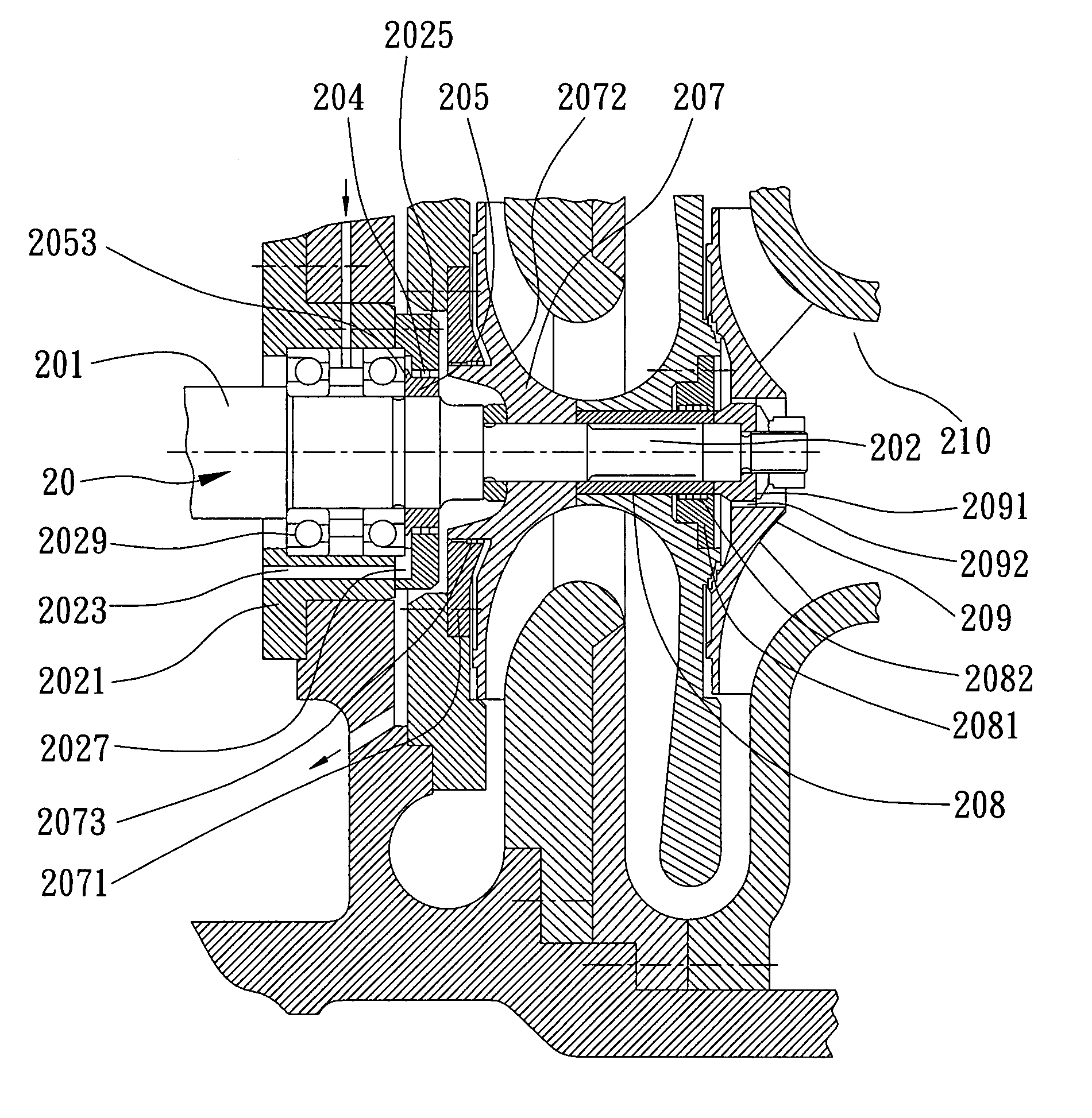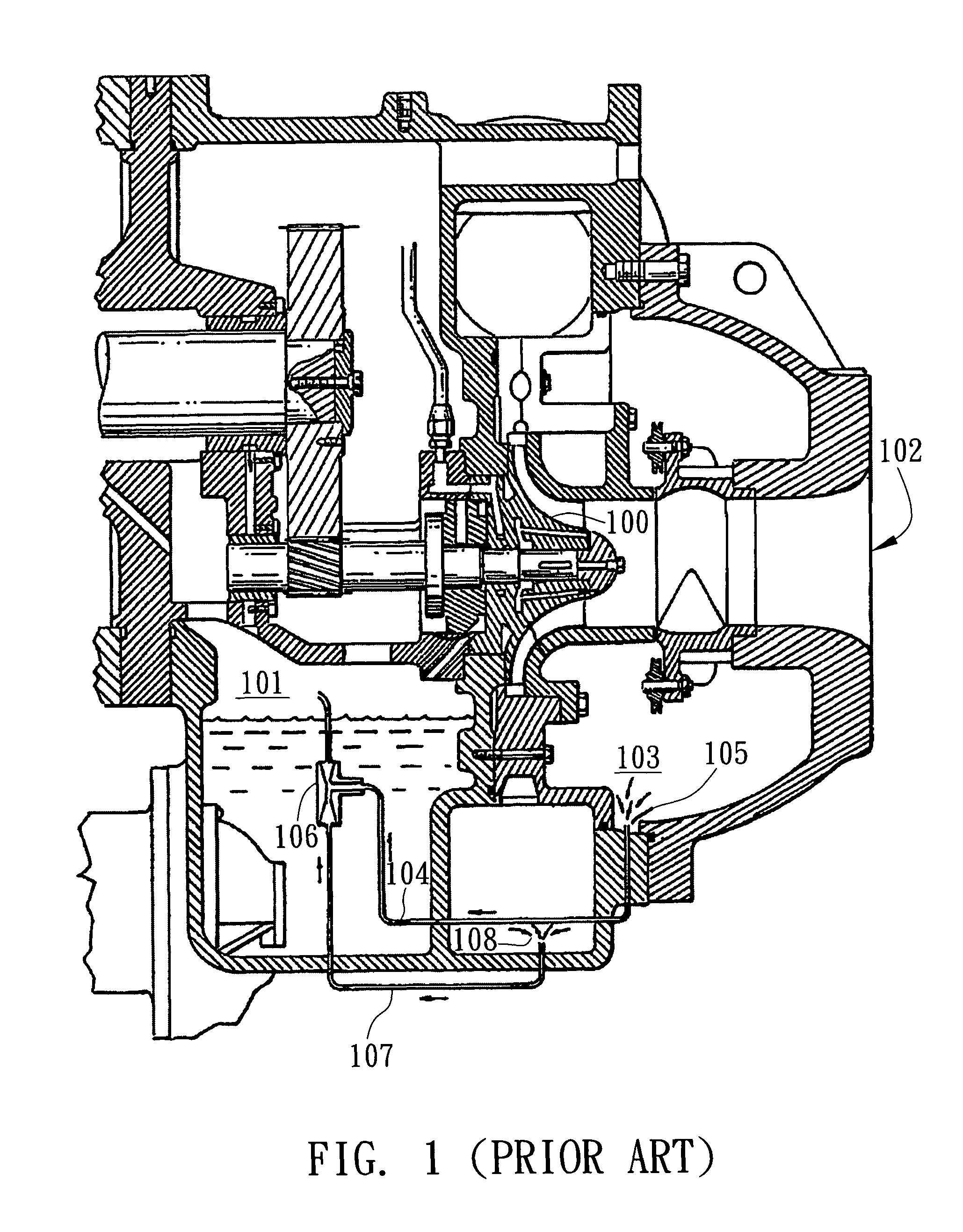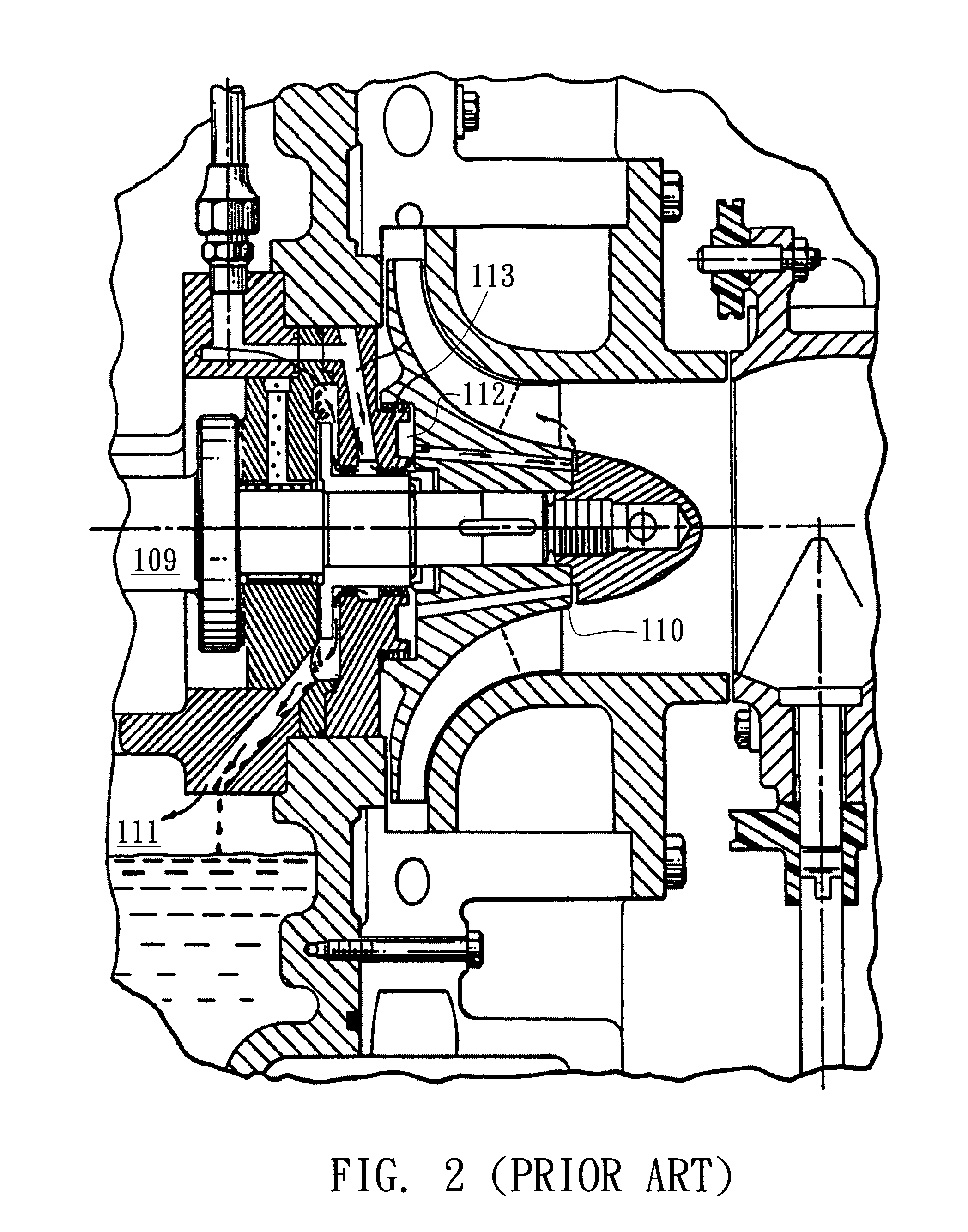Rotor mechanism of centrifugal compressor
a centrifugal compressor and rotating mechanism technology, applied in mechanical equipment, machines/engines, liquid fuel engines, etc., can solve the problems of low rigidity, low efficiency of hydrodynamic bearings, and inability to teach effective means for blocking contamination of refrigerant loops, etc., to improve compressor efficiency, reduce pressure, and high industrial applicability
- Summary
- Abstract
- Description
- Claims
- Application Information
AI Technical Summary
Benefits of technology
Problems solved by technology
Method used
Image
Examples
Embodiment Construction
[0024]The following embodiments are provided to illustrate the present invention. Persons having ordinary skills in the art can easily appreciate technical feature and the achieved functions of the present invention.
[0025]Referring to FIGS. 3 and 4, the present invention proposes a rotor mechanism of a centrifugal compressor. The rotor mechanism is connectable to a power output device 40, and is used for blocking leakage of lubricants and recycling of lubricants to an oil sump 30. The rotor mechanism comprises a rotary shaft 20, a bearing housing 2021, and a bearing plate 2025. The rotary shaft 20 comprises a drive side 201 and a transmission side 202. A connecting portion 203 connected to the power output device 40, a rolling bearing 2029, and a screw nut 205 for securing are provided in sequence from the drive side 201 to the transmission side 202. The screw nut 205 secures the rolling bearing 2029 in position in the rotary shaft and has an oil slinger 2053 facing the surface of t...
PUM
 Login to View More
Login to View More Abstract
Description
Claims
Application Information
 Login to View More
Login to View More - R&D
- Intellectual Property
- Life Sciences
- Materials
- Tech Scout
- Unparalleled Data Quality
- Higher Quality Content
- 60% Fewer Hallucinations
Browse by: Latest US Patents, China's latest patents, Technical Efficacy Thesaurus, Application Domain, Technology Topic, Popular Technical Reports.
© 2025 PatSnap. All rights reserved.Legal|Privacy policy|Modern Slavery Act Transparency Statement|Sitemap|About US| Contact US: help@patsnap.com



